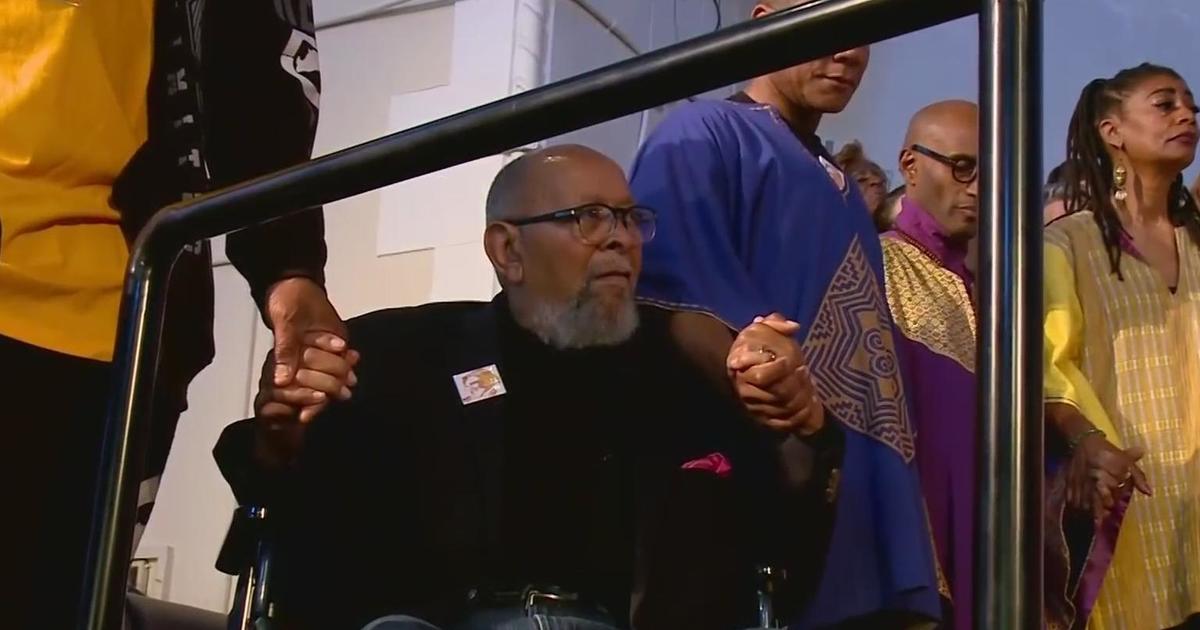San Francisco Van Ness Avenue's Bus Rapid Transit Lanes Open After Years Of Construction
SAN FRANCISCO (CBS SF) -- After years of construction delays and being a source of irritation for neighbors and local business owners, on Friday morning San Francisco transit officials finally began running buses along the rapid transit lanes added to Van Ness Avenue.
In 2003, 75 percent of voters approved the sales tax to plan rapid transit service on Van Ness Avenue. Construction on the red concrete center lanes began late in 2016 with a planned completion date of 2019, but delays mounted and years rolled beyond the deadline date.
Meanwhile, travel on the major north-south traffic artery was difficult and neighboring Franklin and Gough streets were often gridlocked.
On Thursday, commuters who use public transit on Van Ness were hopeful the years of waiting were worth it.
"I think it's a fantastic addition to the options that people have to get around," said Vivek Vaydy. "I think it's been a long time in the making from what I've heard and so getting to finally see it open will be amazing for the city.
Justin Yang, likewise, was ready to test the route.
"I'm just looking forward to all the improvements, the speed improvements getting where I need to go faster," Yang said.
At the Friday morning ceremony celebrating the opening of the bus lanes on Van Ness, Mayor London Breed cut the ribbon.
"This is going to be a meaningful change reducing the travel time by 30%, making public transportation more attractive to people," said Breed.
House Speaker Nancy Pelosi also issued a statement about the project, which received about $116 million in federal funding.
"The first of its kind in San Francisco, the Van Ness Bus Rapid Transit System will provide easier commutes through the heart of our city -- reducing congestion, improving safety and helping combat the climate crisis," Pelosi said.
"We have long awaited today's momentous grand opening and can't thank the city and the Van Ness corridor enough for their patience and cooperation," said San Francisco Municipal Transportation Agency Director of Transportation Jeffrey Tumlin, referring to the delays that plagued construction on the project.
Officials said the $345.9 million project will significantly reduce transit time on the busy avenue for both Muni and Golden Gate Transit buses with the dedicated lanes in addition to improving safety for riders.
San Francisco resident John Moran, who has been riding the bus for almost three decades, said he's happy the project is finally complete.
"This is how I get to work every day, the Van Ness corridor. So I'm very happy to have it," he said. "It will cut my commute time considerably."
On Friday, some people learned that the hard way about the restrictions on using the red lanes.
"I saw a cyclist going down the red lane. A cop saw him, pulled him over, and ticketed him," said Humberto Dejesus.
Some people, like Katja von Schuttenbach, are on board with the new way of getting around.
"Just to have the convenience on a regular basis to go up and down Van Ness is priceless," she said. "This is great for tourists and for residents."
However, a man who rides Muni every day told KPIX he has more of a wait and see approach.
"Hopefully it can get me down Van Ness faster," the rider said. "Hopefully it'll make the buses move faster down the road, but I'm not really sure if it'll help the cars on the road."
Van Ness Avenue is one of the busiest north-south public transit corridors in the city, serving over 16,000 Muni customers daily on the 49 Mission/Van Ness and 90 San Bruno Owl bus routes as well as Golden Gate Transit customers.
During the construction, city officials said, they were able to complete needed upgrades in the utility grids in the neighborhood including replacing more than 22,000 feet of 1800s-era underground water mains, building an earthquake-resistant sewer system and overhauling the emergency firefighting water supply system.
Business owners along the Van Ness corridor have complained for years about the incessant construction and promises of project end dates that would only be pushed back with delays.
Brian Bruckner, owner of Big Swingin' Cycles, previously told KPIX 5 that the construction -- on top of pandemic-era strains -- took a toll on shop owners.
"Yeah, we lost some neighbors. I feel terrible for some of the businesses that maybe weren't as established as ours," Bruckner said. "Now we have this beautiful bus lane out here. You wonder if there's enough people here left to use it. Downtown seems like a ghost town."
In July of last year, a San Francisco Civil Grand Jury report found that many of the setbacks during the Van Ness Improvement Project were foreseeable and avoidable.
- ALSO READ: Grand Jury Report on Van Ness Avenue Project
Among the findings were:
1. Planning and design processes failed to capture the scope of the project adequately.
2. Contracting processes failed to instill accountability.
3. Ongoing project management failed to remediate problems efficiently and effectively
The report found that the delayed completion dates have damaged the public's confidence in SFMTA to keep its promises.
In a statement, the agency responded:
"We appreciate the work of the San Francisco Civil Grand Jury on the Van Ness Improvement Project. It raises certain issues identified in prior internal audits and we are actively working on incorporating lessons learned from those issues into successful projects throughout the City. The SFMTA has resolved multiple contractor claims relating to the issues in the report, including several where the contractor acknowledged its shortcomings. We regret that the report does not properly reflect the roles and responsibilities of a Construction Management General Contractor on a capital construction project as complex as the Van Ness Improvement Project."
More information about the project can be found at the SFMTA website.



